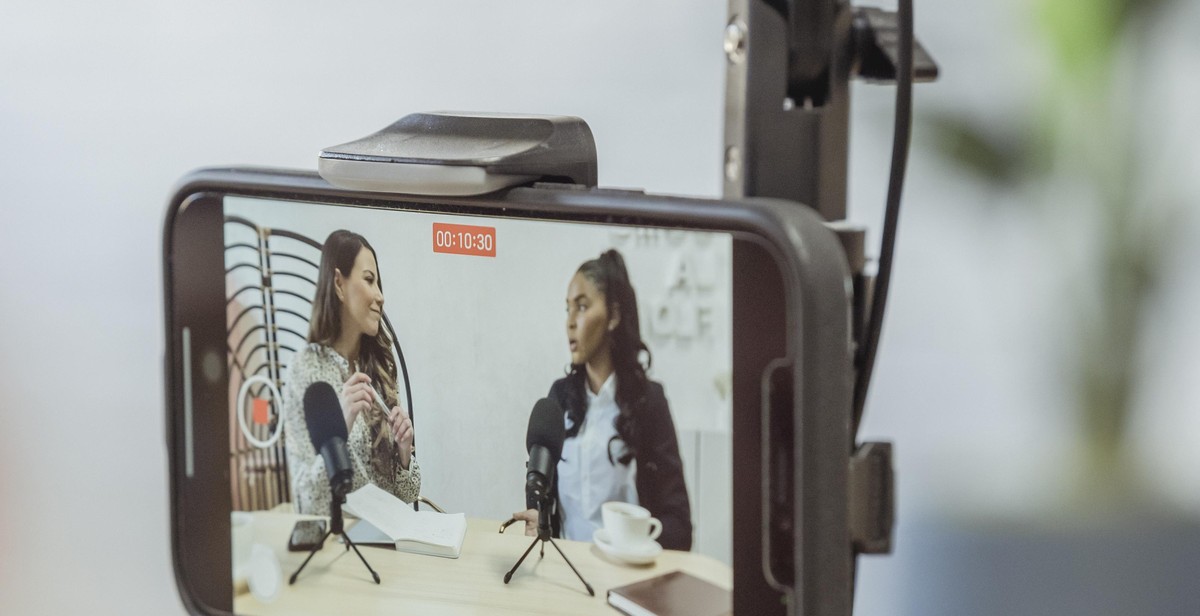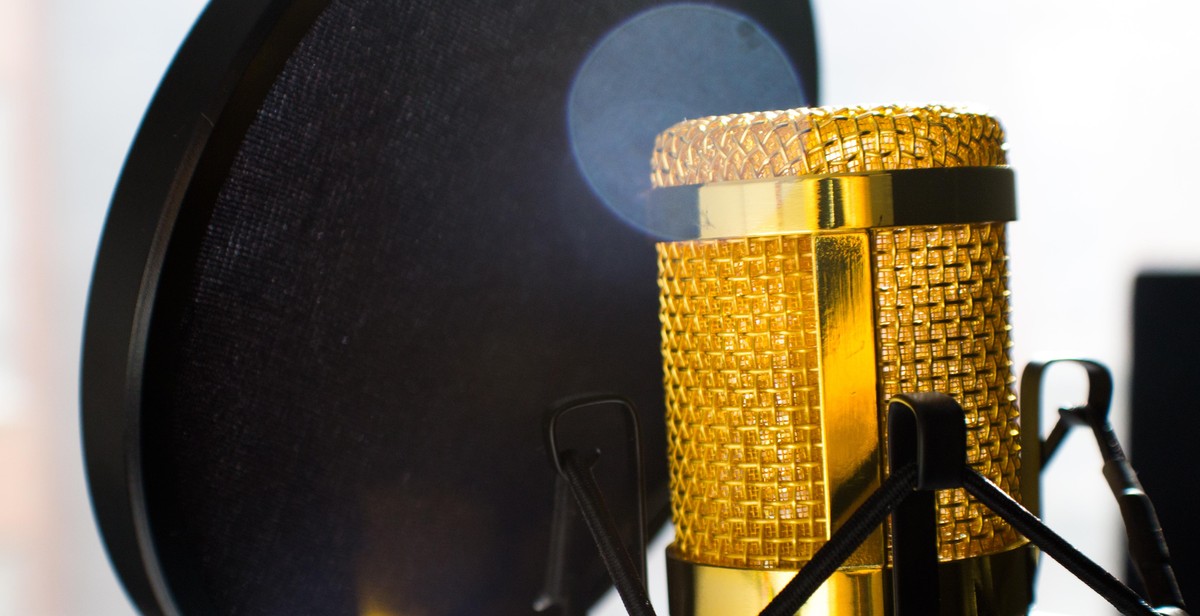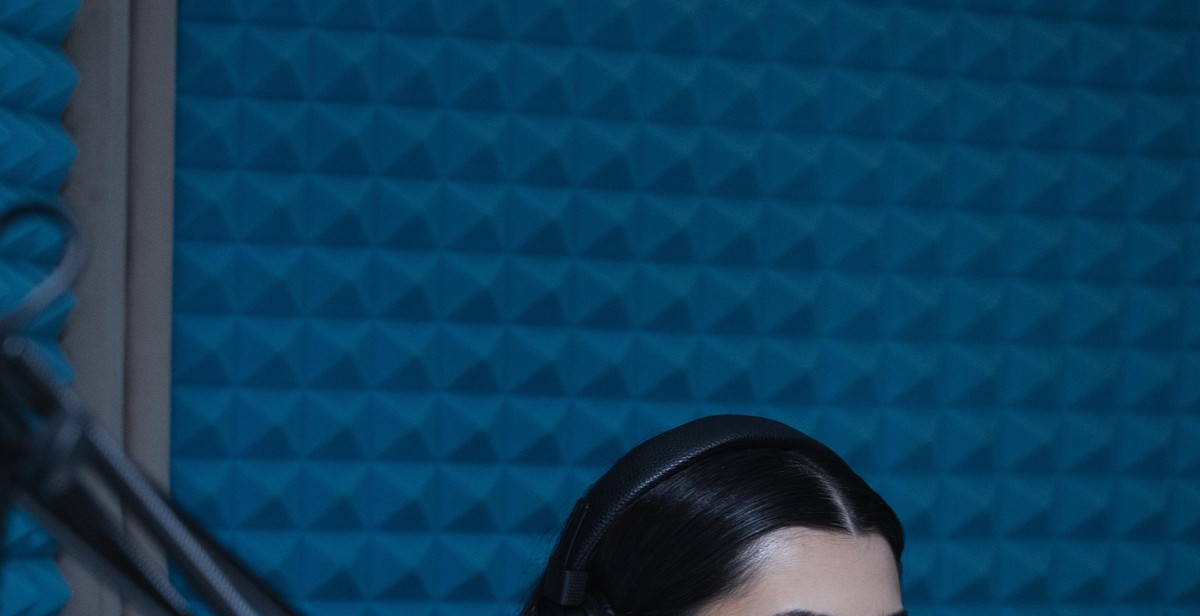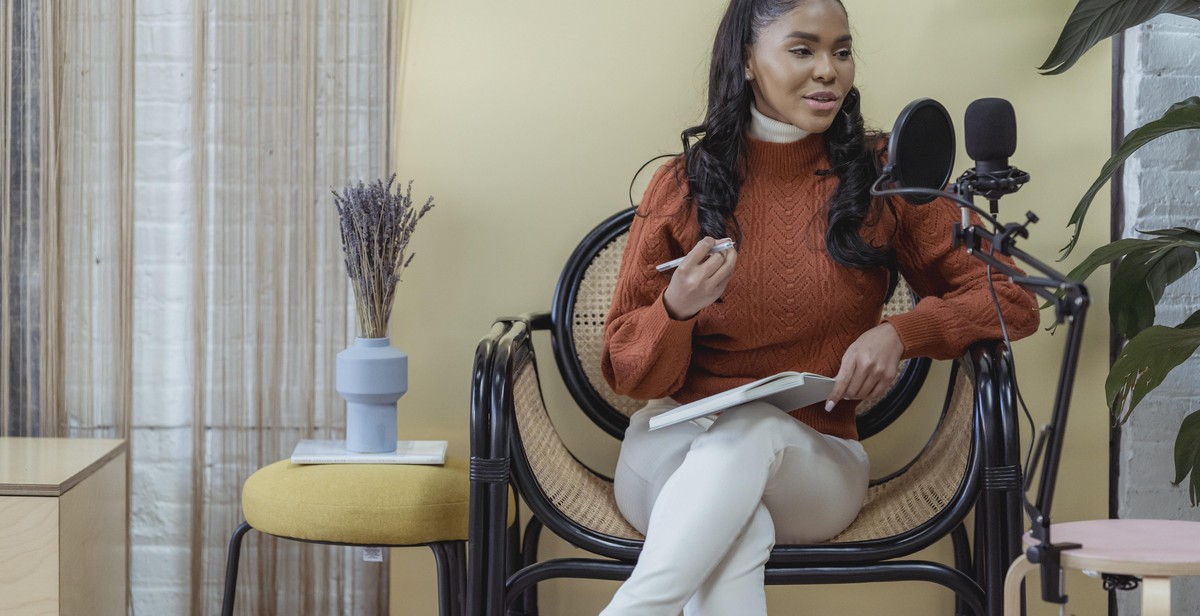How to Start a Podcast: A Step-by-Step Guide to Launching Your Own Show
Podcasting has become a popular medium for sharing information, entertainment, and stories with the world. Whether you want to share your expertise on a particular subject or just have fun conversations with friends, starting a podcast can be a rewarding experience. However, if you’re new to podcasting, the process of creating and launching a podcast can seem daunting.
Why Start a Podcast?
Podcasting allows you to connect with an audience and share your message in a unique and engaging way. It can help you establish yourself as an expert in your field, build a community around your brand, and even generate revenue through sponsorships and advertising. Plus, creating a podcast can be a fun and creative outlet that allows you to explore new topics and connect with interesting people.
Step-by-Step Guide to Launching Your Own Show
In this guide, we’ll walk you through the process of starting a podcast, from defining your concept and choosing equipment to recording, editing, and publishing your first episode. We’ll also cover strategies for growing your audience and monetizing your podcast. By the end of this guide, you’ll have a clear understanding of what it takes to launch a successful podcast.
- Define Your Concept
- Choose Your Equipment
- Create Your Show Format
- Record and Edit Your Episodes
- Choose a Hosting Platform
- Publish Your Show and Grow Your Audience
- Monetize Your Podcast
With the right tools and strategies, anyone can start a podcast and share their message with the world. So, let’s get started!

Step 1: Define Your Podcast Niche
Starting a podcast can be an exciting and rewarding experience. However, before you start recording your first episode, it’s important to define your podcast niche. Your niche is the topic or subject matter that your podcast will focus on.
Choose a Topic You’re Passionate About
When choosing a niche for your podcast, it’s important to choose a topic that you’re passionate about. This will make it easier for you to consistently create content and engage with your audience. If you’re not passionate about your topic, it will be difficult to stay motivated and create quality content.
Think about your hobbies, interests, and areas of expertise. What topics do you love talking about? What topics do you have a lot of knowledge and experience in?
Research Your Competition
Once you’ve identified your niche, it’s important to research your competition. Look for other podcasts in your niche and listen to their episodes. Take note of what topics they cover, how they structure their episodes, and how they engage with their audience.
By researching your competition, you can identify gaps in the market and find ways to differentiate your podcast from others in your niche. This will help you create unique and valuable content that will attract and retain listeners.
- Choose a topic you’re passionate about
- Research your competition
In summary, defining your podcast niche is an important first step in launching your own show. Choose a topic you’re passionate about and research your competition to create unique and valuable content that will attract and retain listeners.

Step 2: Plan Your Podcast Format
Now that you have chosen your niche, it’s time to plan your podcast format. Your format will be the foundation of your show, and it will determine how you will structure your episodes. There are several formats to choose from, so it’s important to choose one that fits your niche and your audience’s preferences.
Choose a Format That Fits Your Niche
When choosing a format, consider the type of content you want to produce and your target audience. Here are some popular podcast formats:
- Interviews: Conduct interviews with experts, influencers, or interesting people in your niche. This format is great for building relationships and providing valuable insights for your listeners.
- Solo: Host the show by yourself and share your thoughts, opinions, and experiences. This format is great for establishing yourself as an authority in your niche.
- Co-Hosted: Host the show with a co-host and discuss topics together. This format is great for adding different perspectives and creating engaging conversations.
- Storytelling: Tell stories related to your niche and engage your listeners with captivating narratives. This format is great for creating emotional connections with your audience.
Choose a format that aligns with your niche and your personality. It’s important to be authentic and passionate about your content to keep your listeners engaged.
Plan Your Episode Structure
Once you have chosen your format, it’s time to plan your episode structure. Here are some elements to consider:
| Element | Description |
|---|---|
| Introduction | Welcome your listeners and introduce the topic of the episode. |
| Sponsorship | Include a short sponsorship message if you have a sponsor for the episode. |
| Segment 1 | Present the main topic or interview guest. |
| Segment 2 | Include additional content related to the main topic or a segment that adds value to your listeners. |
| Conclusion | Summarize the episode and encourage listeners to take action or provide feedback. |
Your episode structure should be consistent to create a sense of familiarity for your listeners. However, don’t be afraid to experiment and add new segments or elements to keep your show fresh and engaging.
Now that you have planned your podcast format, it’s time to move on to the next step: choosing your equipment and software.

Step 3: Get the Right Equipment
Now that you have a plan and a format for your podcast, it’s time to invest in the right equipment. The quality of your audio will make or break your podcast, so it’s important to choose the right microphones, headphones, audio interface, and recording software.
Microphones
When it comes to microphones, there are many options available. However, it’s important to choose a microphone that suits your needs and budget. Here are some popular options:
- USB Microphones: These are easy to use and budget-friendly. They plug directly into your computer, and you can start recording right away. The Blue Yeti and Audio-Technica AT2020USB+ are popular choices.
- XLR Microphones: These require an audio interface to connect to your computer. They offer better sound quality and more control over your recordings. The Shure SM7B and Rode NT1-A are popular choices.
Headphones
Headphones are important for monitoring your audio while recording. They also help to block out external noise. Here are some popular options:
- Closed-Back Headphones: These are designed to block out external noise and prevent sound leakage. The Audio-Technica ATH-M50x and Sony MDR-7506 are popular choices.
- Open-Back Headphones: These are designed for critical listening and offer a more natural sound. The Sennheiser HD 600 and Beyerdynamic DT 990 Pro are popular choices.
Audio Interface
An audio interface is necessary if you’re using XLR microphones. It connects your microphones to your computer and offers better sound quality and more control over your recordings. Here are some popular options:
- Focusrite Scarlett Series: These offer great sound quality and are budget-friendly. The Scarlett Solo and Scarlett 2i2 are popular choices.
- Universal Audio Apollo Series: These offer high-end sound quality and advanced features. They are more expensive than the Scarlett series. The Apollo Twin and Apollo X4 are popular choices.
Recording Software
Recording software is necessary for recording and editing your podcast. There are many options available, but here are some popular choices:
- GarageBand: This comes pre-installed on Mac computers and is a great option for beginners.
- Audacity: This is a free and open-source software available for Mac and Windows.
- Adobe Audition: This is a professional-grade software with advanced features. It’s available for Mac and Windows.
| Product | Price | Type | Connection | ||||||||||||||||||||||||||||||||||||||
|---|---|---|---|---|---|---|---|---|---|---|---|---|---|---|---|---|---|---|---|---|---|---|---|---|---|---|---|---|---|---|---|---|---|---|---|---|---|---|---|---|---|
| Blue Yeti | $129.99 | USB Microphone | USB | ||||||||||||||||||||||||||||||||||||||
| Audio-Technica AT2020USB+ | $149.00 | USB Microphone | USB | ||||||||||||||||||||||||||||||||||||||
| Shure SM7B | $399.00 | XLR Microphone | XLR | ||||||||||||||||||||||||||||||||||||||
| Rode NT1-A | $229.00 | XLR Microphone | XLR | ||||||||||||||||||||||||||||||||||||||
| Audio-Technica ATH-M50x | $149.00 | Closed-Back Headphones | 3.5mm | ||||||||||||||||||||||||||||||||||||||
| Sony MDR-7506 | $99.99 | Closed-
Step 4: Record and Edit Your EpisodesRecording and editing your podcast episodes can be a daunting task, but it is an essential step towards creating a high-quality podcast that your audience will love. In this section, we will discuss some recording and editing tips that will help you produce professional-sounding episodes. Recording TipsWhen it comes to recording your podcast episodes, there are a few things you should keep in mind:
Editing TipsOnce you have recorded your podcast episode, it’s time to edit it. Here are some tips to help you edit your podcast like a pro:
Step 5: Create Your Podcast Artwork and Intro MusicNow that you have identified your niche, developed your content strategy, recorded your episodes, and edited them to perfection, you need to create your podcast artwork and intro music. This is an essential step in establishing your brand and attracting listeners. Design Your Podcast ArtworkYour podcast artwork is the first thing that potential listeners will see when they come across your show. It should be visually appealing, eye-catching, and representative of your brand and content. Here are some tips to keep in mind when designing your podcast artwork:
You can design your podcast artwork using graphic design tools such as Canva, Adobe Photoshop, or hire a professional designer to create it for you. Create Your Intro MusicYour intro music is the signature sound of your podcast. It sets the tone for your show and creates a memorable listening experience for your audience. When creating your intro music, keep the following in mind:
You can create your intro music using music production software such as GarageBand, Logic Pro, or hire a freelance composer to create it for you.
Take the time to create great podcast artwork and intro music – it can make all the difference in establishing your brand and attracting listeners to your show.
Step 6: Choose Your Podcast Hosting PlatformOnce you have recorded and edited your podcast, it’s time to choose a hosting platform where you can upload your episodes and make them available to your listeners. There are many podcast hosting platforms available, each with its own features and pricing plans. In this section, we will compare some of the most popular hosting platforms and help you choose the right plan for your podcast. Compare Podcast Hosting PlatformsHere are some of the most popular podcast hosting platforms:
These are just a few examples of the many podcast hosting platforms available. When choosing a platform, consider the features that are important to you, such as analytics, monetization options, and ease of use. It’s also important to consider the pricing plans and whether they fit within your budget. Choose the Right PlanMost podcast hosting platforms offer multiple pricing plans based on the amount of storage and bandwidth you need. When choosing a plan, consider how often you will be releasing episodes and how long they will be. You don’t want to run out of storage or bandwidth mid-season! Some platforms also offer additional features, such as advanced analytics or monetization options, with their higher-priced plans. Consider whether these features are important to you and whether they justify the additional cost. Finally, don’t be afraid to start with a free plan if it’s available. This can be a great way to test out a platform and see if it’s the right fit for you before committing to a paid plan.
Step 7: Submit Your Podcast to DirectoriesOnce you have recorded and edited your podcast, it’s time to submit it to directories so that people can find and listen to it. Here are the three main directories you should submit your podcast to: 1. Apple PodcastsSubmitting your podcast to Apple Podcasts is essential as it’s the most popular podcast directory. Here’s how to do it:
Once your podcast is approved, it will be available on Apple Podcasts for people to find and listen to. 2. SpotifySpotify is another popular podcast directory. Here’s how to submit your podcast to Spotify:
Spotify will review your podcast and let you know if it’s been accepted. If it is, your podcast will be available on Spotify for people to find and listen to. 3. Google PodcastsGoogle Podcasts is a newer podcast directory, but it’s still important to submit your podcast to it. Here’s how:
Google will review your podcast and let you know if it’s been accepted. If it is, your podcast will be available on Google Podcasts for people to find and listen to. By submitting your podcast to these three directories, you’ll increase its visibility and reach a wider audience.
ConclusionStarting a podcast may seem like a daunting task, but with the right tools and mindset, it can be a rewarding experience. By following the step-by-step guide outlined above, you can successfully launch your own show and share your message with the world. Remember these key takeaways:
Starting a podcast is not only a creative outlet but also a powerful tool to connect with like-minded individuals and grow your personal brand. It takes time and effort to build an audience, but with patience and perseverance, you can achieve great success.
With the help of platforms like Libsyn and Anchor, and software like Audacity, launching a podcast has never been easier. So what are you waiting for? Start your podcast today and share your voice with the world! |




